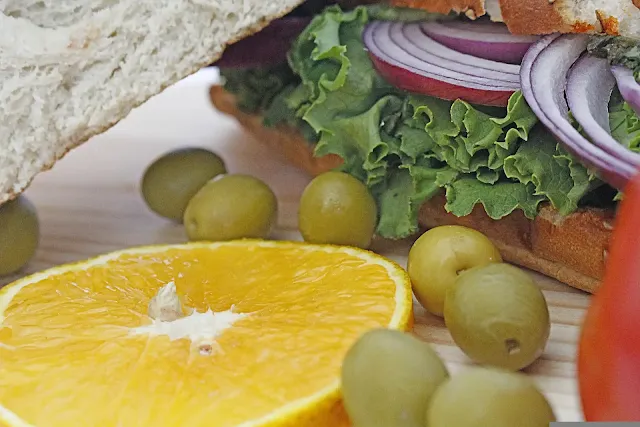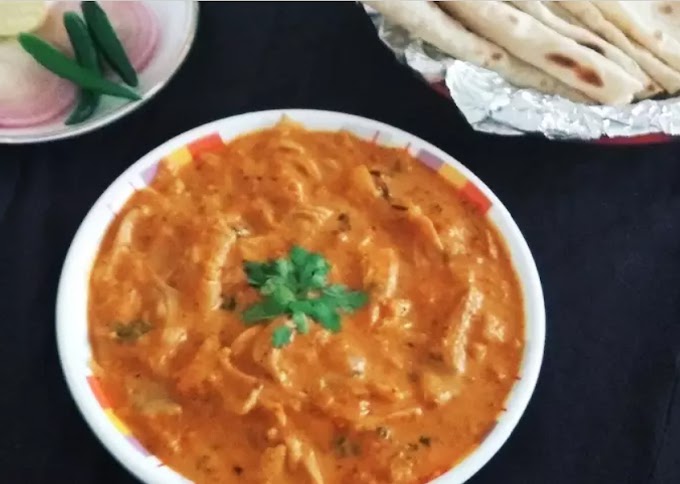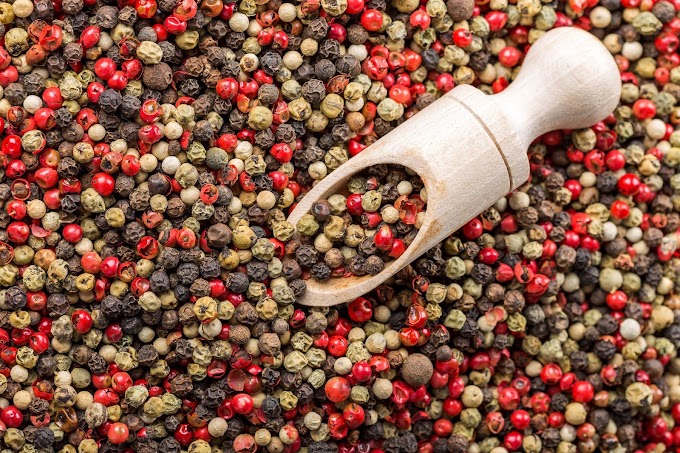When we talk of Indian superfoods, it is impossible that Ayurveda, the good old Indian medical science, is not mentioned. Not just because Ayurveda has had a profound impact on peoples’ lives for 1000s of years, knowingly or unknowingly but because it offers immaculate knowledge about the deep connection of food with mankind. Ayurveda professes that the food we eat is capable of nourishing our minds, and emotions, not just our bodies!
Ayurveda is a combination of two words - ‘Ayush’, which means life, and ‘Ved’, which means wisdom. Ayurveda believes food has a holistic and therapeutic effect on humans. When taken correctly, it acts as medicine.
Basics of Ayurveda
As per Ayurveda, the human body is an extension of the universe. Everything that exists in the naked universe is also there within a human body. So, every human body has a unique combination of elemental vital energies, known as doshas:
Vata (air and space)
Pitta (fire and water), and
Kapha (earth and water)
When the combination of these elemental vital energies is disturbed, we fall sick.
Food plays a big role in balancing these vital energies inside our bodies.
The reason I’ve mentioned Ayurveda is that most Indian Superfoods have been prescribed by Ayurveda, and the same have been in use for 1000s of years in India. It’s time the world takes the advantage of the treasure Ayurveda has to offer! Let's talk about the Indian Superfoods now.
What is a Superfood?
Superfood is a category of food that is packed with vitamins, minerals, antioxidants, protein, fibers, and more, which lend immense health benefits to humans. Superfoods needn’t be fashionable or costly. Superfoods can include simple ingredients, including spices, as used commonly in all Indian cuisine for thousands of years.
Now let’s talk about the Indian superfoods that you should include in your daily diet for superlative health benefits.
Indian Gooseberry
You might have tried acai berry. Time to try out Indian Gooseberry. Back in India, it is called ‘Amla’, and it’s widely available in vegetable shops. It has 20 times more vitamin C than acai berry! It has similar anti-aging and immune-boosting properties. It is used in different ways, mostly pickled, and candied in sugary syrup. You can also easily extract juice after removing the seeds, and add some sugar to taste!
Beet Greens
 |
| Beet greens: Indian Superfoods for the world! |
Beet greens are arguably more nutritious than super-expensive kale. Beet greens are rich in Vitamin A and K, copper, manganese, iron, and calcium.
Beet greens are the leaves of beet that most of us throw away mindlessly, knowing little that they are subtle, sweet, and easiest to cook. Here are some of the ways you can prepare beet greens, and make them a part of your daily diet.
Indian Blackberry (Jamun)
 |
| Jamun: one of the wonderful Indian Superfoods |
Jamun or Indian Blackberry is a seasonal summer fruit. It is also known as Java Plum, Kamblang, and Black Plum in different parts of the world. Jamun is loaded with loads of nutrients and is packed with fructose, glucose, iron, potassium, vitamin C, proteins, carbohydrates, and magnesium.
Jamun is also a rich source of antioxidants, calcium, phosphorus, and flavonoids. Thiamine, riboflavin, carotene, fiber, niacin, folic acid, protein, and fat are some of the other nutrients present in this wonder fruit.
The fruit is known to have immense benefits for people suffering from diabetes, high blood pressure (hypertension), and anxiety. It is also known to help curb blood sugar, and general tiredness and build immunity. For more detailed benefits of Jamun, check out this article.
Ashwagandha
The term Ashwagandha is a Sanskrit word that means ‘smell of a horse’ (ashwa = horse, gandha = smell). It’s a traditional Ayurvedic supplement that comes in different forms. It is an evergreen herb that is immensely useful in tackling blood sugar, inflammation, memory, stress, energy, and concentration among others.
Mainly, the dried leaves and roots of Ashwagandha are used as supplements to increase stamina, tackle stress, and improve fertility. You might find it awkward to see Ashwagandha on the list of Indian Superfoods, but that's because not many people outside India are aware of this amazing medicinal herb. Agreed, it's not a superfood in the truest sense but since it has so many benefits, it finds its place in my list of Indian Superfoods!
You may find this detailed article in Healthline on Ashwagandha useful. It contains scientific evidence of the many benefits of this little wonderful plant!
Asparagus Racemosus (Shatavari)
 |
| Shatavari plant with roots |
Again, it is a traditional Ayurvedic herb that has been used for over 1000 years in India. It’s essentially an adaptogenic herb, which means it helps the body cope with physical and emotional stress. Here are some of the many uses of Shatavari:
- Antioxidant
- Anti-inflammatory
- Immunity booster
- Helps relieve cough
- Helps in treating ulcers
- Cures and prevents kidney stones
- Maintains blood sugar
- Anti-aging
- Anti-depressant
To know more about Shatavari and how to use it, read here.
Moringa (Drumstick)
It’s a popular vegetable in India that’s widely available across the country. Depending on the culture and geography, there are numerous cuisines. Moringa is rich in proteins, vitamins, and minerals. Most parts of the moringa tree are edible, including the pods, fruits, and leaves.
Leaves are rich in:
- Proteins
- Vitamin B6
- Vitamin C
- Iron
- Riboflavin (B2)
- Vitamin A
- Magnesium
Moringa is a rich source of antioxidants, it helps in reducing blood sugar levels, reduces inflammation, lowers cholesterol, and much more. Here’re science-backed facts about moringa in detail.
Jackfruit
 |
| Jackfruit: one of the prominent Indian Superfoods |
The name might confuse you, as it’s an exotic vegetable that’s native to south India, and is widely eaten across the country in different forms. Interestingly, it’s one of the largest tree fruits in the world which can reach up to 80 pounds (35 kgs) in weight. The body of the fruit is rough, and spiky whereas, it's whitish from the inside. Jackfruit is regarded as vegetarian’s ‘meat’ owing to its texture, and resemblance to shredded meat.
Jackfruit is literally a jack of all trades! It’s packed with almost all the minerals, vitamins, fiber, proteins, fats, carbs, and more. This detailed article from Healthline might interest you if you wanna know more about the tons of benefits of Jackfruit.
Turmeric - One of the most revered Indian Superfoods
Turmeric is another marvelous spice that has been in use in Indian kitchens and in Ayurveda from time immemorial. There are numerous studies that have proven turmeric to be a magical spice (that's how it's used in India), owing to its active ingredient - curcumin.
Turmeric is a relative of ginger, and the root of the turmeric plant is used. Fresh turmeric is dark yellow from the inside. Most Indian curries, including famous butter chicken, has turmeric as one of the main ingredients. There are tons of benefits, some of which have been summarized below:
- Reduces inflammation
- Sharpens memory
- Reduces pain
- Antioxidant properties
- Reduces risk of heart diseases
- Alleviates depression
- Useful in tackling various kinds of cancers
This article from Cleveland Clinic sheds more light on the numerous benefits of Turmeric, one of the major Indian Superfoods.
Makhana (Fox Seed)
 |
| Makahana: Indian Superfoods |
Blog updated on December 14, 2022
Makhana, also known as lotus seed, is one of the commonest snacking dishes in India. They're simply roasted and enjoyed as a snack with evening tea. They are also widely used in curries, other dishes, and homemade desserts.
Makhanas come from lotus seeds. The dried seeds are roasted, as a result of which we get the white puffs, called Makhanas.
Makhanas are the powerhouse of nutrients such as potassium, calcium, proteins, carbohydrates, fiber, and iron among others.
There are several proven health benefits of Makhanas, here are some of the main benefits:
- Good for heart
- Strengthens bones
- Weight management
- Curbs blood sugar
- Improves digestion
- Delays aging
Makhanas are there on the list of Indian Superfoods for good reasons, find out more here.
Ragi (Finger Millet)
The list of Indian Superfoods won’t be complete without the mention of Ragi, also known as finger millet. Ragi has always been part of the Indian diet. Ragi is gluten-free, so it's very suitable for those having gluten allergies. It’s rich in dietary fibers, proteins, calcium, iron, magnesium, potassium, and amino acids.
Here are some of the major benefits of this Indian Superfood:
- Helps in losing weight naturally
- Amino acids like Methionine and Lysine help acts as anti-aging agents
- Magnesium helps in reducing hair fall
- Good for bones, owing to the presence of calcium
- The presence of polyphenols helps in maintaining the blood sugar
- Dietary fibers help in keeping your gut in a good shape
- Helps to alleviate insomnia, depression, and anxiety
- Prevents colon cancer
There’s so much you need to read about this Indian Superfood, hop on to this portal for more details along with a couple of interesting Ragi recipes.
Dalia (Broken Wheat): Stands tall among Indian Superfoods
 |
| Dalia (Cracked Wheat) |
This is one of my favorites, not only because it is one of the many Indian Superfoods but because I had been eating it since my childhood. My dear aunt used to make this using jaggery regularly, especially in winter. After her demise, there was a big gap of many years.
A few years ago, I started cooking Dalia on my own using fond memories. I’m happy to state that now I’ve almost re-created the taste, texture, and aroma of the simple yet awesome sweet Dalia recipe. I will share that in one of my forthcoming blogs.
Desi Ghee (Clarified Butter)
Desi Ghee has been the mainstay of Indian Superfoods since the beginning of civilization. You won’t find a kitchen where Desi Ghee is not there on the shelf. Right from daily cuisines to special desserts - laddoos, moong dal halwa, and gajar halwa, it’s widely used in all households. All the early Indian religious texts and Ayurveda talks about Desi Ghee prominently.
Desi Ghee is made from pure (unadulterated) cow milk. It is rich in Omega 3, Omega 6, and essential fatty acids. it‘s also rich in Vitamins A, E, D, linoleic acid, and oxidants. Goes without saying, it does wonders to your body if taken daily in the right doses.
Some of the main benefits of Desi Ghee have been outlined below.
- Improves digestion
- Maintains blood sugar
- Melts belly fat. Read this detailed post about belly fat if that’s your major concern.
- Improves eyesight
- Improves lactation in the nursing mothers
- Good for bones
- Promotes hair growth
This detailed blog on Desi Ghee will shed more light on the benefits, myths around it, recipes, and more.
Wrapping Up
I'm aware that there would be many more ingredients/spices/medicinal plants that might have been left out in this compilation of Indian Superfoods. Well, India is immensely rich in its heritage, rituals, and culture. Ayurveda, the ancient Indian science, is helping the modern world. In fact, today, it has become more relevant as more people are suffering from lifestyle ailments than ever before. Modern English medicine doesn't have answers to many physical, emotional, and spiritual conditions.
Ayurveda certainly has answers for most of them. This article, which covers the story of an American and how he got cured of a colon ulcer, might be useful for the skeptics.
I am thankful to everyone who read this post. I'll be happy if you pick some, if not all, of the Indian Superfoods from this post and get benefitted. And if you personally find these ingredients useful, spread the word. Ask your loved ones to try these Indian Superfoods for a healthy mind, body, and soul.
Cheers!
PS: let me know the superfoods you'd like me to add to the list by commenting below. You can also reach out to us using the contact us page.
I will be eager to know, so write back or comment below!
Stay safe, and stay blessed!
Chao! 👋
You may also like:










